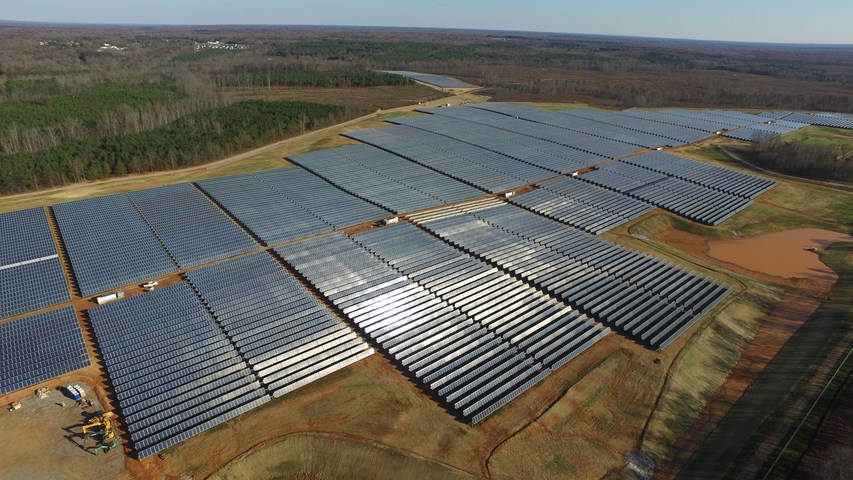
More than a dozen new facilities across Virginia are putting the sun to work and moving the state up in nationwide solar power rankings.
Dominion Energy is investing more than $800 million in solar power in Virginia, with much of it being built at little or no cost to most customers. Additional solar projects are now in the planning stages.
“Our company has made a major commitment to develop significant blocks of solar generation to meet customers’ energy needs going forward,” said Paul Koonce, CEO of Power Generation at Dominion Energy. “Our goal is to have a balanced generating portfolio that is highly reliable, cost effective and environmentally responsible. The cost of energy powered by the sun is coming down and we are working hard to develop projects in new and economical ways for our customers.”
Some 398 megawatts of solar generation have either been completed or are under development throughout much of Virginia – enough to power 100,000 homes. Most of the development and construction costs will be borne by specific contractual customers such as large business and government.
The Corporate Clean Energy Procurement Index, in partnership with the Retail Industry Leaders Association and the Information Technology Council, recently ranked Virginia among the top 20 states for solar power and in the top three for utility clean energy purchasing options.
More than 80 percent of the cost of the facilities is being covered by large business and government customers, including the Commonwealth of Virginia and the University of Virginia, who signed long-term contracts with Dominion to develop the generation.
In addition to building larger solar-powered units, Dominion’s Solar Partnership Program has placed company-owned solar panels on leased rooftops and grounds of government and business properties throughout its Virginia service area. Ten of these facilities have been installed at sites including Canon in Gloucester, Old Dominion University in Norfolk and Capital One in Chester.
The Commonwealth’s commitment to 500 megawatts of large-scale solar development by 2020 was included in Senate Bill 1349, passed by the General Assembly in February 2015. SB 1349 froze the company’s base rates – making up about 60 percent of the typical residential bill – at 2015 levels for five years. This helped provide price stability for customers as the company deals with complex federal air quality regulations, including those limiting power station carbon dioxide emissions.

